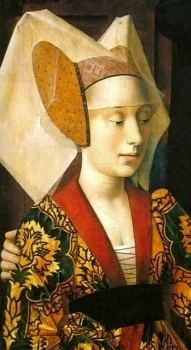Name Godeberta Godeberta | Died June 11, 700 AD | |
 | ||
Patronage Noyon; invoked against drought, epidemics, plague | ||
Venerated in Roman Catholic Church | ||
Saint Godeberta (Godebertha, Godberta) (c. 640 – June 11, c. 700) was a Frankish saint. She was born at Boves, near Amiens, to a noble family that was associated with the court of Clovis II. With the support of Saint Eligius, Godeberta became a nun despite the fact that her parents wanted her to marry. Clovis gave her a small palace at Noyon, which included a chapel dedicated to Saint George. She was joined there by many other young women.
Veneration
The earliest source about her life is believed to have been composed by Radbod, bishop of Noyon around 1067. A miracle recorded of her states that in 676, when Noyon was suffering a terrible fire, Godeberta made the sign of the cross over the flames, extinguishing them.
The body of the saint was interred in the chapel of St. George, which was afterwards rededicated to her. Her relics were translated in 1168 to the cathedral of Noyon. The relics were protected during the French Revolution.
The cathedral houses a gold ring said to have been given to her by Eligius, the patron saint of goldsmiths. The Catholic Encyclopedia states:
When the question of her marriage was being discussed in presence of the king, the saintly Bishop of Noyon, Eligius, as if by inspiration, presented Godeberta with a golden ring and expressed the hope that she might devote her life to the service of God. Godeberta, moved by the Holy Spirit and feeling her heart suddenly filled with Divine love, turned away from the bright prospects before her and refused the advantageous offers that had been made by her noble suitors.[1]
